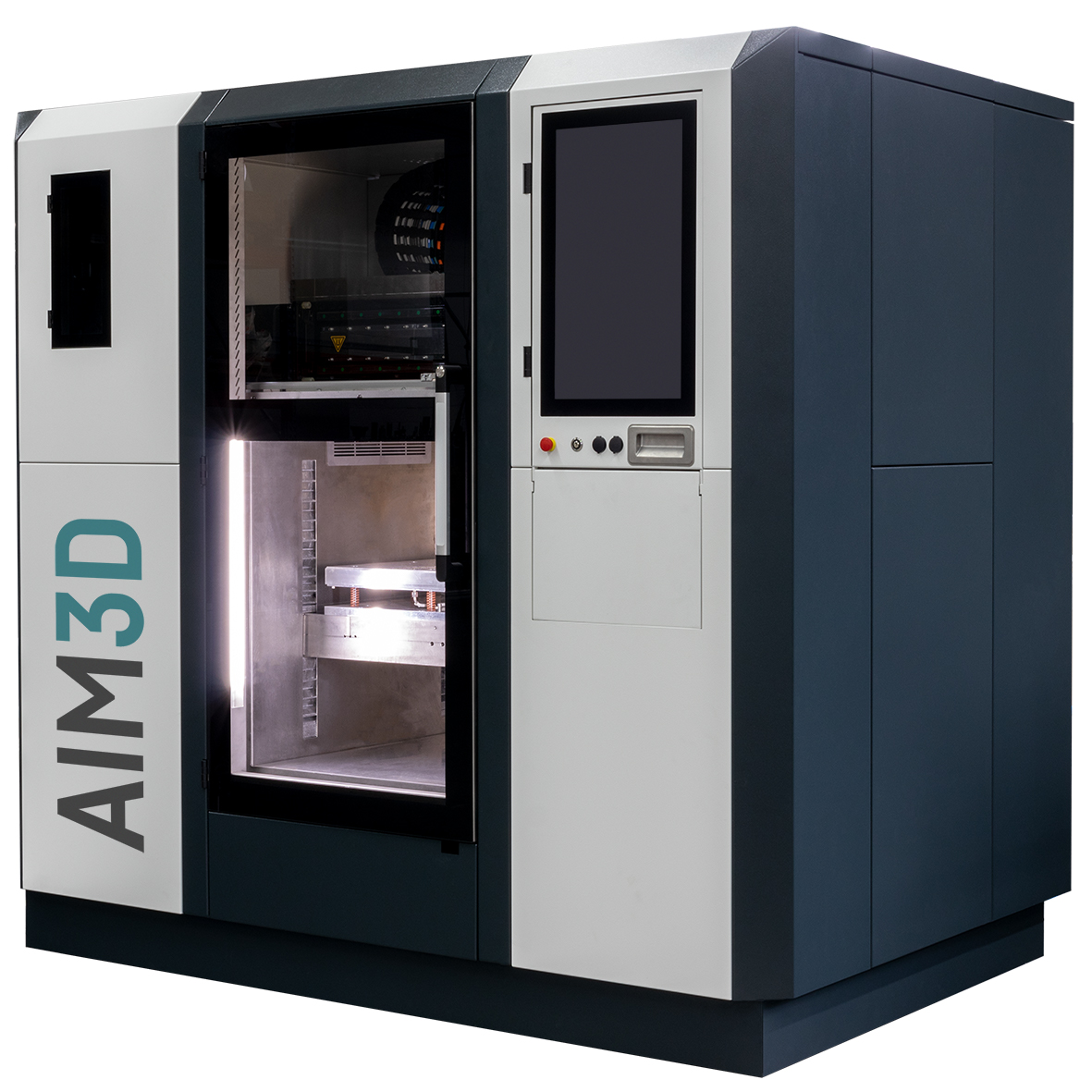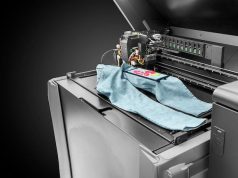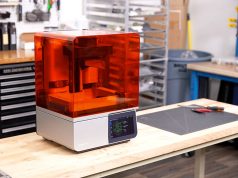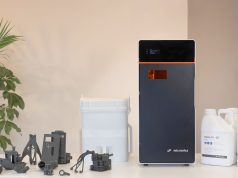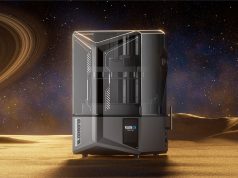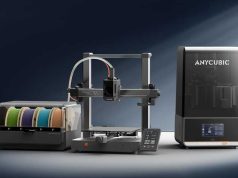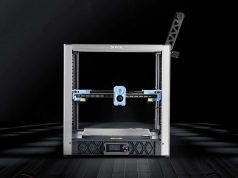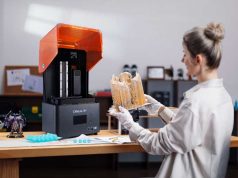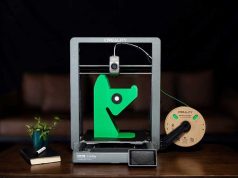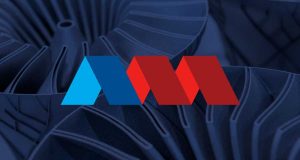Every 3D printing process competes with classic manufacturing strategies, such as casting or milling, in terms of mechanical properties, time factors and cost-effectiveness. In addition, it also competes with alternative 3D printing technologies. The technological challenge: Layer-based 3D build-up processes of polymers currently often exhibit inhomogeneous skill values. With its patent-pending voxelfill process, AIM3D is taking a new approach that overcomes inhomogeneous strengths and scores with defined selective densities in the component.
At the two major fall trade shows in 2022, Formnext 2022 and K 2022, AIM3D will provide information on two highlights: First, the new voxelfill process for sustainable improvement of the strength values of a layer-based 3D component, and second, the market launch of the ExAM 510 system, which now complements the ExAM 255, with a larger installation space for higher volumes of components, and will be shown in action at the trade shows.
Voxelfill principle overcomes inhomogeneous strengths
In polymer additive manufacturing, components exhibit inhomogeneous strength values due to the layer-based build-up process. This manifests itself primarily in disadvantages in tensile and flexural strengths, as well as very brittle behavior along the Z-axis. In contrast, the achievable strengths along the X and Y axes of some processes already approach the strengths of classical injection molding processes.
AIM3D has already demonstrated this with the processing of fiber-filled components based on the material PA6 GF30. To enable broad applicability of 3D-printed components, the phenomenon of inhomogeneous strengths must be fundamentally solved. Using the 3D extrusion technology of the CEM process, AIM3D developed a voxelfill strategy that overcomes these limitations and increases the cost-effectiveness of the CEM process. Voxelfill is also applicable to multi-material components and is basically suitable for the material groups plastic, metal and ceramics to build 3D components.
The two-stage voxelfill process at a glance
In the voxelfill approach, components are no longer built up exclusively layer by layer (i.e. 2.5-dimensionally), but are filled across layers by using so-called voxels as volume areas. To do this, the component contour is first created as a basic structure over one or more webs of the extruded material, as usual. Inside the component, a grid pattern is created that defines the boundaries of the volume elements to be filled, similarly to cavities. This structure of voxels to be filled is similar to honeycombs in a beehive.
The voxel fill strategy now consists of two process stages: 1. Generation of a grid structure: the CEM system repeats this structure up to a defined height of the volume elements, until the filling of the previously generated cavities (voxels) is then carried out at this point by injecting the thermoplastic material through the extruder. 2nd filling phase of the voxels: Now the second, even more important component of this 3D printing strategy comes into play: when filling the volume areas, not all voxels are filled in one plane. This would again result in a weak spot in the Z-direction in exactly the “seam” plane.
By offsetting the solid elements halfway up the voxels, a kind of “brick bond” is created in the component. The fracture line is thus necessarily offset. This results in an enormous increase in strength and also improves the elasticity of the components in the Z direction. In addition, the volume elements introduced reduce the printing time for fully filled components enormously and thus decisively increase the cost-effectiveness of the CEM process.
Outlook on the potentials of voxelfill
Variations of the voxelfill strategy by means of CEM processes allow the use of different materials: Hybrid multi-material solutions with different voxel fill materials and building materials for the contour/structure of the inner walls become possible. In this way, material properties can be “customized”.
Component weight, damping properties, center of gravity manipulations or elasticities can be defined, tailored to the application. By selectively filling only certain volume chambers (selective densities), based on FE simulations, the component properties could be specifically influenced. Thus, with Voxelfill, it is possible to fill only those areas of a component that are absolutely necessary for the force flow. As a result, these components are purely optically “classic” components from the outside, also with all the advantages for post-processing.
At the same time, however, 3D printing reduces material and weight to the point of lightweight construction. Especially when using fiber-reinforced materials, the use of voxelfill provides an additional option to align the fibers in the component in a targeted manner in order to increase the mechanical properties. In the plane, the CEM process already offers very good possibilities for controlling the orientation of the fibers. In the voxelfill strategy, this concerns the contour and the inner walls of the component. By injecting the material into the volume chambers (filling the voxels), the 3D component also receives fibers that are aligned in the Z-axis, thus additionally improving the mechanical properties once again.
Clemens Lieberwirth, CTO at AIM3D: “The voxelfill process is of course particularly suitable for 3D printing plastics and fiber-filled plastics, but it is also suitable for 3D printing metal and ceramic components using the CEM process. In general, there are advantages due to the higher build speed and the cross-layer filling.”
Market launch of ExAM 510
K 2022 and Formnext 2022 in the fall of 2022 will mark the sales launch of AIM3D’s new ExAM 510 pellet printer. The Rostock-based company brought this large CEM system to the beta phase in 1.5 years of development. Beta phase users include ZF Friedrichshafen, Schäffler and Clausthal Technical University.
The new ExAM 510 stands for larger build spaces, higher precision and accelerated build speeds. The ExAM 510 printer is a multi-material printer for additive manufacturing that can build up to three materials in parallel. The expanded build envelope of 510 x 510 x 400 mm³ now opens up a wide range of applications. The build space can be tempered at up to 200 ºC to reduce stresses in the part and process high-performance materials.
The significantly increased build rate or build speed, depending of course on the material, is up to 250 cm³/h (when using a 0.4 mm die). This extruder class enables a discharge rate that is up to a factor of 10 higher than that of commercially available filament extruders. The special charm of the ExAM 510 is revealed on the material side. AIM3D equipped the line with a heatable process chamber specialized for high-temperature plastics. This also makes it possible to process high-temperature plastics such as PEEK, PEI, PSU, PPS, with and without fiber filling.
Find out more about AIM3D at aim3d.de.
Subscribe to our Newsletter
3DPResso is a weekly newsletter that links to the most exciting global stories from the 3D printing and additive manufacturing industry.



